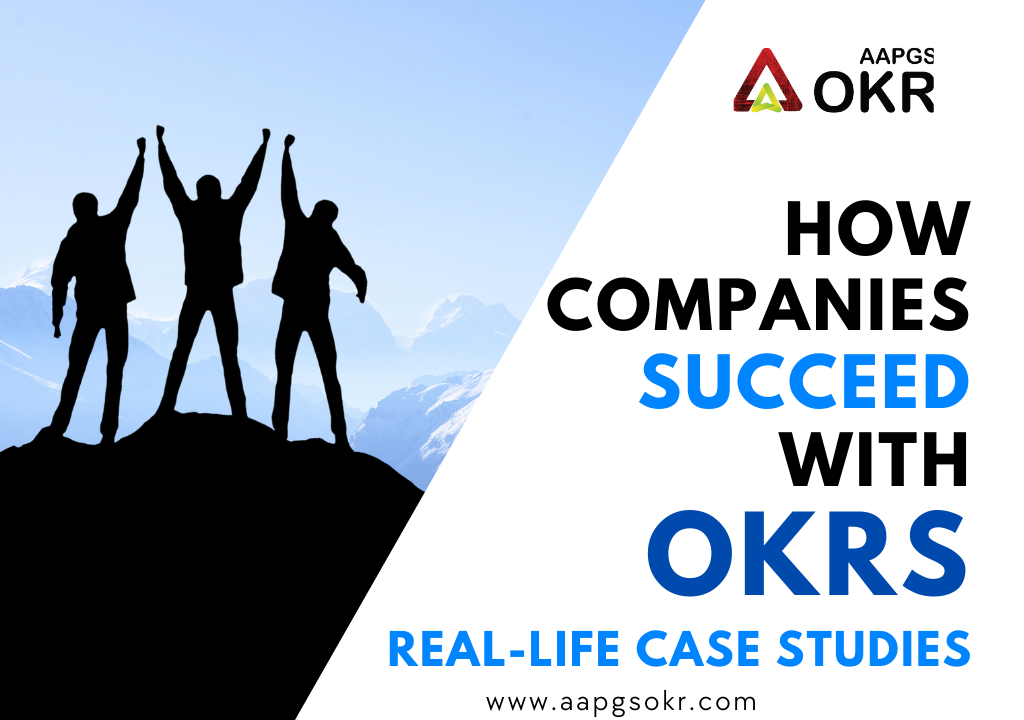In today’s competitive business landscape, achieving success requires clarity, focus, and alignment. Many top-performing companies have turned to OKRs (Objectives and Key Results) to drive their goals and measure success. OKRs provide a structured framework for setting clear objectives and tracking measurable outcomes, fostering a culture of accountability and performance improvement.
This blog explores real-life case studies of companies that implemented OKRs and achieved remarkable results. These stories highlight the transformative power of OKRs across various industries.
What Are OKRs and Why Do They Work?
Objectives and Key Results (OKRs) is a goal-setting methodology that helps organizations:
- Define Ambitious Objectives: Clear, inspiring goals that align with the organization’s vision.
- Measure Success: Key results are quantifiable outcomes that track progress.
- Foster Alignment: Ensures all teams work toward the same overarching goals.
OKRs are successful because they emphasise focus, transparency, and continuous improvement.
Real-Life Case Studies of OKRs Driving Success
Case Study 1: Google: Scaling with OKRs
Challenge: Google needed a structured framework to manage its rapid growth.
Solution: Google adopted OKRs to align individual goals with company objectives, ensuring everyone was focused on measurable outcomes.
Results:
- Enhanced team alignment across departments.
- Clear focus on innovation and product development.
- Read more about Google’s OKR journey here.
Case Study 2: Intel: Enhancing Operational Efficiency
Challenge: Intel sought to improve operational efficiency and productivity.
Solution: OKRs were introduced to break down company goals into actionable tasks for every team.
Results:
- Reduced project timelines by 30%.
- Increased employee engagement and ownership.
- Learn about Intel’s OKR framework here.
Case Study 3: Spotify: Driving Innovation
Challenge: As a fast-growing music platform, Spotify needed to foster innovation while maintaining focus.
Solution: Spotify used OKRs to set bold objectives for its engineering and design teams, focusing on user experience improvements.
Results:
- Launched new features like personalized playlists.
- Boosted customer engagement metrics significantly.
- Explore Spotify’s success with OKRs here.
Case Study 4: LinkedIn: Aligning Teams Globally
Challenge: LinkedIn struggled to align its global teams with the company’s overarching goals.
Solution: OKRs created a transparent framework where every team’s objectives supported the company’s key results.
Results:
- Improved team collaboration across regions.
- Faster decision-making through clearly defined priorities.
- Find more details on LinkedIn’s OKR strategy here.
Case Study 5: Amazon: Improving Customer Satisfaction
Challenge: Amazon aimed to enhance customer satisfaction while scaling its operations.
Solution: OKRs focused on reducing delivery times, improving product recommendations, and optimizing the user experience.
Results:
- Reduced delivery times by 15%.
- Improved customer satisfaction scores significantly.
- Read about Amazon’s OKR-driven customer strategy here.
Why Companies Succeed with OKRs
1. Clear Focus on Priorities
OKRs help organisations identify and focus on what truly matters, reducing distractions and inefficiencies.
2. Measurable Results
With quantifiable key results, companies can track progress and make data-driven decisions.
3. Enhanced Alignment
OKRs create a transparent environment where individual, team, and organizational goals are aligned.
4. Adaptability to Change
OKRs are flexible, allowing companies to adjust objectives based on evolving market conditions.
5. Accountability and Ownership
Everyone in the organisation understands their role in achieving the company’s objectives, fostering accountability.
Conclusion
These real-life case studies demonstrate how companies across industries leverage OKRs to drive focus, alignment, and measurable success. By adopting the OKR framework, organizations can unlock their true potential, foster innovation, and achieve remarkable business outcomes.
get a free demo for aapgs now

